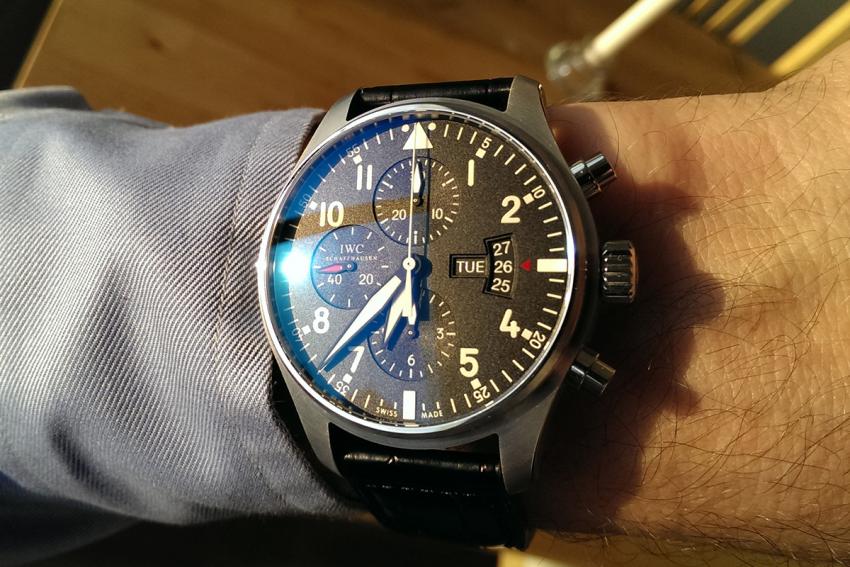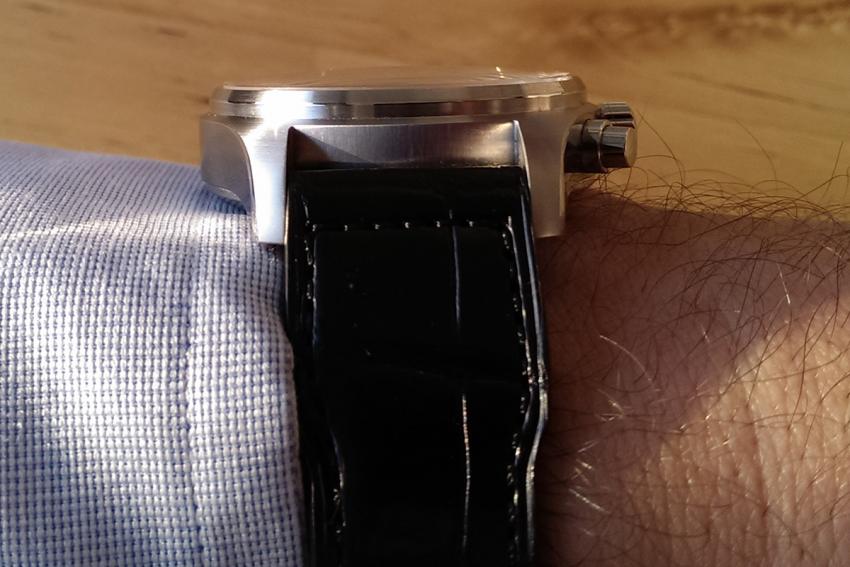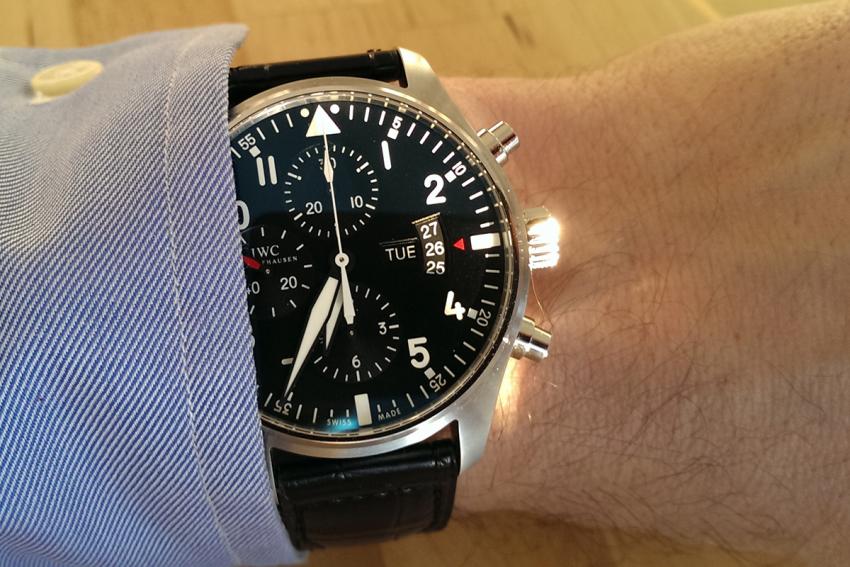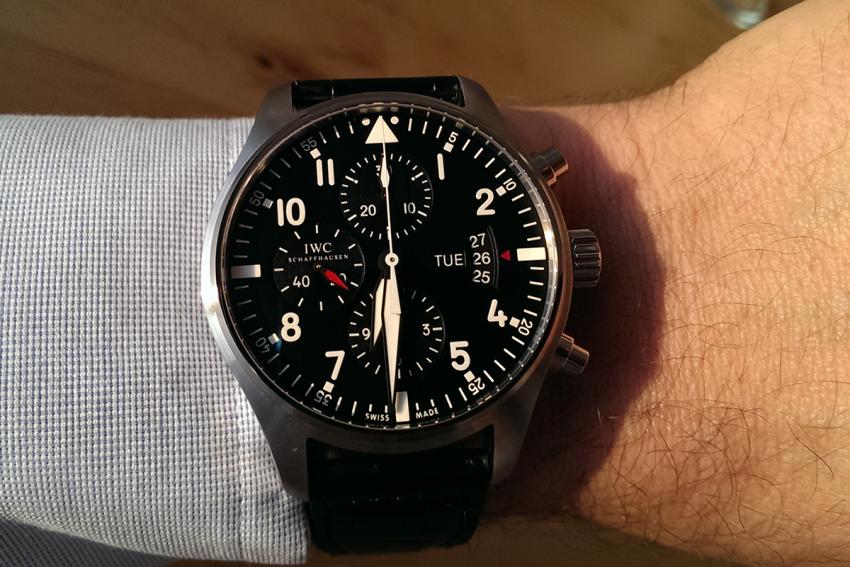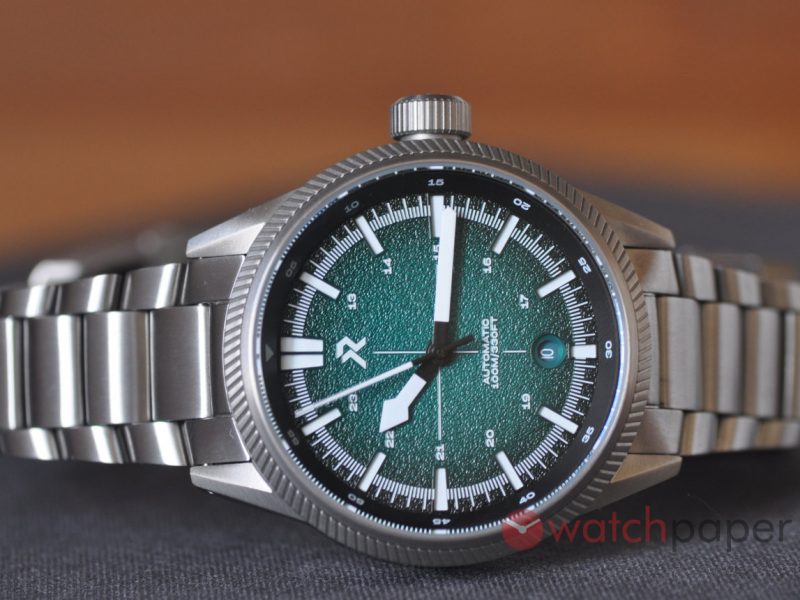IWC Pilot’s Watch Chronograph 377701 — hands-on review
Earlier in the year, John Mayer’s impassioned letter to IWC was met by IWC’s very measured response. For fans of business writing (and there must be a couple of you out there), IWC’s open letter to John Mayer is a small masterpiece of corporate communications in that it manages to be that vanishingly rare combination of “honest” and “on-message”. In their reply, they remind Mr. Mayer that they are as much in the business of selling watches as they are creators of fine timepieces. Their constituency is, necessarily, much broader than the collector community because they have to actually stay in business. This means selling in volume to people who aren’t John Mayer. This in turn means creating watches like the Ingenieur, which Mr. Mayer singles-out as inauthentic to the brand because of its Hublot-like design excesses. IWC’s marketing has been a fairly predictable blend. Playing on its heritage in pilot’s watches, promotional materials feature: instructional videos (for men!); some behind-the-scenes looks at their production facilities, complete with shots of technicians hunched over their desks working assiduously on what’s by extension “your” watch; and social media feeds full of the standard beauty shots and IWC’s good deeds in the community. The only serious misstep I could spot was this extended piece. Note how, though it checks nearly all of IWC’s iconic brand associations (masculinity, aviation, exclusivity etc.), it fails because its clumsy mash-up of these tropes is pretty close to self-parody. Even John imagine-my-fee Malkovich can’t rescue this particular exercise in branding. Fortunately, subsequent efforts in self-promotion have showcased to advantage what the venerable watchmakers in Schaffhausen do very well indeed.
What does this excursion into IWC’s brand perception have to with the 3777? There’s a Pilot’s Chronograph in my collection and it’s there in no small part because of the intangibles one associates with the brand itself. In many reviews, technical specifications are too often put forward as somehow decisive. They are not…at least not at this price point. The movement, the hardness of the steel used for the case, the anti-reflective coating etc. are table stakes. We assume they will be of a very high quality because on each of these attributes the Pilot 3777 faces stiff, and less expensive, competition. The Fliegeruhr category is a crowded one, and if value for money is a consideration you need to ask what separates the 3777 from this – at less than half the cost.
For me, those brand attributes narrowly triumphed over technical specifications and pricing. As a relatively new collector, the IWC signalled an arrival of sorts. History, reputation and, yes, status converged in this choice.
The most recent edition of this piece grew by 1 mm to 43mm and wears large on the wrist. Luckily, the black alligator strap falls straight down from the lugs confining its wrist presence to the case itself. At 15mm, the case sits a bit tall on the wrist. That isn’t a problem except when wearing fitted dress shirts, where it stubbornly insists on blocking the cuff from laying flat, breaking the shirt’s line. However this is a small price to pay at a more formal event, where the facets and curves of the steel catch the light in surprising ways, making this tool watch more jewel-like than it would appear in the harsh light of day.
The dial is deliberate and obvious in its desire to evoke an airplane’s cockpit instrumentation, with day and triple date windows at 3 o’clock and a small seconds sub dial at 9. These contain the only red accents on the matte black of the watch’s face. Besides the minuscule IWC logo in the seconds subdial, another clue to the watch’s luxury status is the radial etchings of the sub-dials themselves, but these tell-tales require close inspection and speak to the restrained elegance that is the hallmark of this watch throughout. Extreme legibility and a strong lume, means the 3777 makes taking rapid glances to tell the time easy on my weakening eyes. Its ease of use is only matched by my G-Shock Aviator, which at 51mm shouts the time from my wrist and makes short or rolled-up sleeves mandatory.
The chronograph complications are invoked with a satisfying click of the pusher at 2 o’clock and can track events as long as 12 hours through the sub dial at 6 o’clock and as short as 30 minutes through the sub dial at 12. Minute increments are indicated precisely with the 12 o’clock sub dial’s hand advancing forward in definitive 1-minute intervals, making measurement a precise affair.
The movement is the calibre 79320, which is a modified version of the venerable 7750. It offers an advertised power reserve of 44 hours from fully wound. I haven’t yet tested its endurance to the full extent because of how much wrist time this watch enjoys in my rotation. In addition, the movement is protected from strong electromagnetic fields by a soft iron core – great, should you ever be concerned about it while too close to a spinning turbine or the teeth of a backhoe. Though if you find yourself in these circumstances you may want to ask yourself what you’re doing there wearing a $6000 watch. This is why we have a beater in our collections.
The IWC Pilot 3777 checks all of the gear boxes for a tool watch, but then so do many others that are less financially ruinous. Why opt for this particular tool watch then? For me, it was the intangibles associated with the fantasy the brand (and this collection in that brand) taps into: the history and the participation in that bit of aviation history through this watch. Also, and crucially, the execution on each of the elements is so expert that this particular incarnation of a pilot’s watch crosses the boundary from extreme craft into refined luxury. This is why you buy it.


